Rhinoceros horn is not up for sale - Property of the R.S.A
The trade in Rhinoceros horn debate rages again all over the internet and in public forums with propaganda and uneducated factual data being spewed everywhere to and fro for everyone to take judgement on Africa’s heritage the Rhinoceros one of earths last prehistoric dinosaurs that’s roamed the earth now un-touched for thousands years until the late 1990-2000.
The white, black, Indian greater one horned Rhinoceros, Sumatran Rhinoceros and finally the Javan Rhinoceros all of which have taken a gigantic hit upon their life pushing them from practically extant to now nearing extinction with some regions within nations seeing them now extinct as of the crave for fake medicine, greed, and culture.
The death toll just for South Africa from where the Rhinoceros horn debate is raging now stands at an “estimated” to the nearest figure of 1,520. This figure from the year 2000 since records really started to take of does not include collateral damage or unborn fetuses so the number could be by far much higher on average of 1,580 – 1,590 total poached deaths for South Africa alone. All poaching incidents are now “recorded by the Department of Environmental Affairs (DEA) which we don’t believe is giving the full tally on. The (DEA) is run by President Jacob Zuma’s government committee.
Pic above is JUST for 2011 - 2012 shows so far a staggering 414
Minister Edna Molewa has stated now on many occasions that government will not approach Convention on International Trade in Endangered Species (CITES) to propose in having trade lifted in Rhinoceros Horn to try to combat the illegal trade, and poaching that has seen numbers of the Rhinoceros plummet this year even though arrests have gone up from 2011.
1970-5 saw the Convention on International Trade in Endangered Species (CITES) list the Rhinoceros horn trade as banned meaning that there was to be no trading in Rhinoceros horn, with a moratorium of Rhinoceros horn being imposed in 2009 locally in South Africa. I have included (up to) but not past 1975 as of the Ivory trade (Elephant) which is a completely different issue that International Animal Rescue Foundation is fighting in Asia and Africa on the ground with the Rhinoceros in Africa of which shall be spoken about in-depth at a later date.
Pic above shows anti poaching units - more people are needed to combat poaching - full training will be given
Many factions are now wanting the trade to be lifted in Rhinoceros horn that would not only see a devastating loss of life, but the black market become more violent and aggressive with an increase in poaching and legal big game hunting that International Animal Rescue Foundation is fighting to now change.
Since the start of 2012 Minister Edna Molewa of the Department of Environmental Affairs (DEA) South Africa, has stated that government will not under no circumstances approach the Convention on International Trade in Endangered Species (CITES) in asking for the Rhinoceros horn trade to be legalised, she quoted to a South African news agency and SANparks (South African National Parks) that government would not approach the Convention on International Trade in Endangered Species (CITES) until 2019 leaving everyone that has fought for this with a little less weight of their shoulders thus breathing a sigh of relief to then concentrate on trying to save this delicate prehistoric realm that is South Africa’s heritage.
Pic above is the (DEA MINISTER) - She has made so many broken promises, please contact her below and DEMAND that Rhinoceros horn is NOT legalised.
The debate lingers though and with intense ground warfare against both the Rhinoceros and the poacher then we are again at a stalemate that could wipe out this sixty million year old species of dinosaur that is emblazoned upon the ten ran South African bankers bill.
South Africa, Namibia, Botswana and Zimbabwe are the last stronghold of about 95% of the world’s rhinos. Zimbabwe though is losing Rhinoceros in vast numbers like that of its neighbour south Africa with numbers now over two hundred and fifty for 2012 with 414 for South Africa.
COUNTRIES THAT ARE FUELLING THE DEBATE TO NOW WANTING TRADE LEGALISED?
Countries that we are aware of so far are listed below.
Good question although we know many “names” we still do not know all countries that may as yet approach the Convention on International Trade in Endangered Species (CITES). We are aware though that South Africa, Kenya, Botswana, Zimbabwe, Nigeria, Mozambique, Tanzania, Zambia, Namibia, China, Vietnam, and Malaysia, Taiwan, Singapore, India, Sudan, and possibly Yemen are debating as well as “fuelling” the Rhinoceros trade, there are though more a list of over one hundred nations was passed to International Animal Rescue Foundation from inside “very reliable inside sources” in August 2012 that obtained this accurate and damning data. Tanzania and Zambia have approached the Convention on International Trade in Endangered Species before in 2010 regarding the Ivory sales that saw Somalia poachers rip through Kenya destroying swathes of Elephant populations for fake tusk and trinket trade. We ask all of you to please lobby your countries environmental departments within AFRICA and demand they say no to trade in Rhinoceros horn.
INDIVIDUALS THAT ARE FUELLING THE DEBATE AND WANTING HORN TRADE LEGALISED?
We have been short in our description as International Animal Rescue Foundation is watching extremely closely those individuals that are not of African nor Asian descent therefore giving us reason to believe that these are major players within the Rhinoceros carnage.
John Hume – Number one largest private Rhinoceros and game farmer in the world, John Hume holds the largest population of privately owned Rhinoceros in the world including Buffalos, Roan and Sable Antelope some of these species are “endangered”. His farm Mauricedale, near Malalane, is worth more than R4-million of which he has an estimated 785 Rhinoceros that he has de-horned keeping all horns in vaults ready for the trade to be lifted. Should the “legal” trade be lifted then this would make him one of the richest men in South Africa with just one horn fetching in excess of $70,000 and with their being just fewer than eight hundred Rhinoceros then he would be making an estimated $54,950,000 and this is taking in to account the front horn only and not the rear. So in reality the number would be by far a lot greater. http://www.dailymail.co.uk/news/article-2195803/Farming-rhinos-legalising-sale-horns-worth-gold-save-extinction-claims-farmer.html
John Hume though has stated categorically that he does not need to sell his horn but is being “told” to keep it by his financial advisor of which is has been stated that the horn would have fetched him in 2010 a total of R200 million. John Hume argues that the horn MUST be taken of the Rhinoceros without even going into any other aspects such as a dye being placed in the horn to, to it being micro chipped and poisoned thus leaving any (TCM) Traditional Chinese Medicine buyer ill which in turn would decrease the values of Rhinoceros horn greatly to even stopping poaching dead in its tracks.
In a 2012 March statement John Hume goes on to state “Even though his stash keeps growing and the price keeps rising, Hume has joined other private owners to demand that the trade in the horns of white rhinos be reopened. “I personally don’t need the trade to be legalised,” he said, “but it is the only chance we’ve got to stop the slaughter of rhinos.”
Moving on with the trade to be legalised John Hume and his partners quoted “Speculators could be stockpiling horn in anticipation of further price increases and opportunities for profit, he said. But he disagreed with the view that South Africans in the hunting and game-ranching industry were “fuelling demand” for horn by playing a role in the illegal supply chain.”
This we statement we find very hard to believe considering that the makers of M99 the powerful tranquilizer synthetic opiate drug has been used by farmers, to even vets and members of the KNP and rangers that have all been involved in Rhinoceros poaching. Need we say that John Hume was also involved but not prosecuted in any such case involving the http://www.iol.co.za/news/new-twist-in-rhino-sale-saga-1.1099735?ot=inmsa.ArticlePrintPageLayout.ot http://www.rhinoconservation.org/2011/07/13/concern-grows-around-south-africas-legal-trade-in-live-rhinos/ Then there is of course animal mistreatment http://www.rhinoarmy.org/site/news/15-rhino-lover-let-reserve-go-to-pot.html need we say more. Dawie Groenewald and his lucrative, barbaric and money-making organised crime cell just shows what type of people we are dealing with. They are not here for Rhinoceros safety they are here for the brutalisation of them to be exploited for Asian and inland gold pocket lining.
Even though these is more than substantial evidence on John Hume and the Groenewald gang of which this lucrative and highly organised crime cell could have gone on for much longer had it not have been for sharp eagle eyes then John Hume “may” of been the largest game rancher in African history to be placed behind bars. John Hume recently attacked International Animal Rescue Foundation calling us “greenies” as of our love and utmost protection for the Rhinoceros and other animals. Mr Hume is against our own ideas that more should be done other than to quickly line the pockets of himself and his very rich contacts. International Animal Rescue Foundation will not be intimidated by some old man rancher that wishes to exploit animals for profit, greed and potential murder.
Moving on in this lucrative area there are other individuals although they are very “quiet” they cannot remain quiet for long. Pelham Jones a so-called “conservationist” and big time private Rhino Farmer has also been seen to approach the Convention on International Trade in Endangered Species in 2012 this year.
In a 2010 article it read –
“More than 90 per cent of Africa’s rhinos live in South Africa, where conservation methods have achieved great success since the 1970s. But this success has now put the species under threat.
“South Africa is the last frontier for the rhino,” said Pelham Jones, of the Private Rhino Owners’ Association. “They have been more or less shot out of the rest of the continent, so poachers are focusing all their considerable efforts on us. We really are under siege.” Radical measures being suggested include legalizing the rhino horn trade again, using horns from rhino that have died a natural death, or have had them removed in a controlled process by owners and rangers. At least one game park is now running a project for “eco-tourists”, charging them to help dart the animals and carve off the horns, thus making them valueless to poachers.
But Mr Jones believes this strategy not only makes a rhino even more vulnerable, by being left without horns to defend itself, but risks the country’s popularity as the unique destination to view the famous “Big Five’ – elephant, lion, leopard, buffalo and rhino. . “People don’t come to South Africa to see the Big Four, or even the Big Four-and-a-Half – by which I mean the rhinos without their horns. The rhino is part of our South African heritage. We have brought them back from extinction once, and we must not allow for the risk of that situation again.”
The Propaganda on Care2.com
I’ve written a lot about the plight of South Africa’s wild rhino population of late. It’s under concerted and brutal attack from ruthless, well-organized poachers who make a killing – quite literally – by selling the butchered animals’ chopped-off horns on illegal Asian markets.
This year’s rhino death count in South Africa now stands at 309.
Earlier this year, the country’s government said that it was considering a complete moratorium on all rhino hunting. Authorities currently issue a limited number of licenses to hunt rhinos legally and export their horns as trophies under the regulations of the Convention on International Trade in Endangered Species (Cites).
Some people have argued that poisoning the horns of living rhinos would deter poachers and recently this strategy has been used in practice for the first time. An informal poll seems to suggest that Care2 readers are somewhat undecided on how they feel about this approach, although, if anything, the numbers lean toward supporting it.
Now, yet another tactic is being touted: legalizing the trade in rhino horns. Do you think that will stop the slaughter?
This week South Africa’s Department of Water and Environmental Affairs announced that they would commission a study on the global rhino horn market and the feasibility of legalizing the trade. Spokesperson Albie Modise said that any funds raised through the sale of government-owned stockpiles would go towards rhino conservation efforts.
Spokesperson Albie Modise (PIC ABOVE) Who oddly works for the (DEA) http://www.zoominfo.com/#!search/profile/person?personId=849294435&targetid=profile
Nice to know that GOVERNMENT are dealing with in corruption NOT !
Andrew Rossaak, the chairperson of the Wildlife and Environment Society of South Africa, believes that this research initiative will help to create “a clear understanding of the demand of horns overseas.” Proponents of the idea argue that banning the trade has failed and that “tried and tested capitalist remedies” should be given a chance.
The Private Rhino Owners’ Association of South Africa also supports legalization. According to its chairperson, Pelham Jones, “we would like to see the legitimate trade of horns from rhinos that have died from age, fighting or relocation.” He says “farmers are sitting on huge stockpiles of horns… we can meet a short-term demand by releasing them and run an education campaign in the process.”
On the other side of the debate, critics believe that legalization would create a demand that could not be met.
Clearly the situation has reached a crisis point, but will legalizing the global trade in rhino horns put an end to the poaching epidemic? Or will it simply open the flood gates and make things even worse? What do you think?
Read more: http://www.care2.com/causes/legalize-the-trade-in-rhino-horns.html#ixzz27up0wxrH
A survey carried out in 2011 showed –
In the survey, an overwhelming 78 per cent of respondents believe trade in rhino horn should not be legalised, while just 12 per cent throw their weight behind the controversial proposal. On the question of whether rhinos should be farmed, 73 per cent disagree and only 15 per cent approve.
To forward on from this International Animal Rescue Foundation has over with two petitions combined 10,000 signatories and counting of those that “DO NOT” want Convention on International Trade in Endangered Species making the trade of Rhinoceros horn legalised but rather than seeing other methods that have been tried and tested and put to work in the filed immediately that can be funded and must be put to use as soon as possible.
One more critic that we are not happy about of which has now lost mine and International Animal Rescue Foundations support is the seventy year old Tiger man who defied so many people by brining rare and endangered Tigers to South Africa. John Varty a South African that has his own reserve, Tiger Canyons holding some beautiful Tiger specimens from the Siberian, Bengal and Sumatran that are all critically endangered has now joined John Hume the very man that we believed would not nor never join such a crucial and mind wrangling and blowing debate that has seen some thousands now go against him on Social media.
Pic above is John Varty (JV) WE are VERY disappointed, then saying this, he is an old man seventy years old now. He has created some fantastic documentaries working with the big cats all his life. However now taking the wrong step the has seen many people leave him. John we ask you to please leave John Humes side and retract your statement or your going to lose a lot of support.
International Animal Rescue Foundation will support the work that John Varty does that is helping to input and higher numbers of Indian Tigers, however as of him losing ten Rhinoceros on his farm as of lack of security then he has felt it necessary now to join in, in the belief that removing the horn of the Rhinoceros is the only and best option, To standing by John Hume no matter what his supporters and/or critics say.
The news feed twenty fours ago that is very upsetting to read of such a great man can be seen here
In an open letter to the world’s largest rhino breeder, Mpumalanga-based John Hume, published on his own JV and the Big Cats website, Varty said Hume should ask the environment minister for permission for a one-off auction of all privately owned horns.
“Point out that the precedent was set in the 1980s when South Africa’s National Parks had ivory auctions in which Japanese, Taiwanese and Chinese buyers participated in the purchase of ivory from culled elephants in Kruger National Park,” he said. “The money from those auctions went back into the protection and conservation of elephants in South Africa.”
If the minister did not grant permission for the auction, he wrote, Hume should “create a global event”, similar to the way Kenyan conservationist Richard Leakey focused attention on elephant poaching when he persuaded then-president Daniel arap Moi to burn 12 tonnes of ivory in 1989.
“In your case, you go ahead with the auction, informing the South African government of your intentions. If you would like me to stand beside you, I will do so,” Varty said.
“You invite 100 private individuals who have rhino horn from dead or dehorned rhino to join you in the auction.
“If you were on your own, the government could arrest you. I doubt if the government could arrest 100 high-profile private individuals trading openly in rhino horn and advertising the auction globally.”
Rekindling debate
The missive generated heated response on social media networks, rekindling debate on whether opening the trade in horn will stop rhino poaching. With this year’s death toll climbing past 410 rhinos, concerned groups are awaiting a decision on the trade debate promised by the environment department’s “rhino conservation issue manager”, Mavuso Msimang, by the end of September. - conservation issue manager”, Mavuso Msimang is pictured below
Varty was criticised by anti-trade groups for supporting the argument of many private rhino owners at workshops convened by Msimang in recent months in the run-up to a seminal meeting of the Convention on International Trade in Endangered Species (Cites) early next year. Private ranchers, who own about 25% of the estimated 18000 white rhinos left in South Africa and a large part of the almost 20 tonnes of stockpiled horn, argued that the only way to halt the slaughter was to lift the trade ban imposed in 2009.
Varty courted controversy when he defied conservation dogma in the 1990s by setting up a tiger-breeding project in the Free State because he believed the Indian government was not doing enough to save the big cats from extinction.
He said present interventions to save rhinos were not working. “We have lost 10 rhinos on our family game reserve in Sabi Sand and now have to hire a small army to protect the rest. It’s a war. “Hume, who owns hundreds of rhinos and dehorns them regularly, said Varty’s open letter supported his view that the only way to stop the poachers was to sell horns to Asian countries, where they are prized as medicinal remedies.
“My answer is that I wish I had the guts to take on the whole world, but at the age of 70 I don’t want to buck the system. I toe the line, work with Cites and stick within the law, even if it’s bad for rhinos,” he said.
Hume’s lawyer, Izak du Toit, said although Varty’s suggestion was “bold and noble”, he was not convinced it could work legally. “But the public lobbying value may be worth it to get the world’s attention. Desperate situations call for desperate measures.”
Environment department spokesperson Albi Modise stressed the “need to continue working with all stakeholders and our entire South African society if the war on rhino poaching is to be won”.
The link can be see here - http://mg.co.za/article/2012-09-28-00-tiger-man-john-varty-issues-rhino-horn-challenge/
The problem that International Animal Rescue Foundation sees here is that Rhinoceros and other game poaching has become the norm to these conservationist’s, they believe now that with plundering stocks of animals and with the vast number now being hit on private reserves and farms then the only way to save or more to stop the problem now is to give in to the problem and give them what they want.
International Animal Rescue Foundation does not see it this was simply by experience we have that goes back many years of a multitude of animals to taking two steps back surveying the situation and damage then forming a plan of action that can see these alternative methods pushed into practice sooner rather than later. Can it work? Yes it can however this is now where everyone needs to group to group together, get their heads out of their asses, leave the cash to one side and focus on the problem in hand and that Is saving the rainbow nations heritage.
Alternative methods of saving the Rhinoceros –without de-horning
Rhinoceros horn poison/toxin
Pic above sh0ws Rhinoceros TOXIN placed within the horn. IS THIS what we are coming to?? Its has to be done though to keep them alive instead of the more drastic option that is DE-HORNING
There are already non-governmental organisations such as Rhinoceros Rescue Project headed up by another South African that saw Rhinoceros poached from their farm. Instinctively this than saw action taken of which has seen many Rhinoceros sedated to having the horns implanted with a “toxin” rather than a poison that then renders the horn useless to the Asian market. This is a major technological achievement although basic it is well thought of and carries a heavy burden upon the Traditional Chinese Market that has to then contemplate on using the horn or not.
The Rhinoceros horn is injected with a compound by the Johannesburg animal welfare team that consists of a drug normally used to combat ticks and parasites, not though one that should be eaten. The chemical most likely a modern but supped up pharmaceutical does not harm the Rhinoceros but keeps humans, ticks and parasites away to thus working as a dual protective agent that is highly toxic to humans in ASIA should they wish to consume the Rhinoceros horn.
The pharmaceutical most likely designed for animals hence the toxicity levels stays within the horn of the Rhinoceros for three to four years after administration. Should anyone member then decide upon crushing the horn down of which the drug still remains in the horn and “active” the human will suffer from a range of neurological nervous system problems that can and will leave them incapacitated to convulsions, sickness, nausea, and diarrhoea.
The drug has been administered to many Rhinoceros now with the owner moving their services to help other grief-stricken reserve and farm owners that have lost Rhinoceros in ones, twos or like this week past in South Africa in Port Elizabeth four with a remaining four one horned Indian Rhinoceros in India the female only twenty-four hours ago sadly dying. A chip is also placed within the horn along with a DNA sample taken hasten prosecution of what Rhinoceros the horn has been taken from.
From our own records only one Rhinoceros sadly passed away whilst the procedure was administered of which was caused by the sedation practice and not by the toxin. Please remember that sedating any animal of this size especially an Elephant is highly dangerous and has to be done with care and speed.
Introduction of dyes
Rhinoceros Rescue Project also carries out this treatment but this could be furthered to by other conservation teams that would literally render the horn useless once cut. Many security teams use dye to protect ATM machines or monies to valuable goods that once opened explode a dye over the criminal and the good that they have stolen.
International Animal Rescue Foundation likes this idea a lot and is in communication with British and American “organisations” that head this up. The dye does no harm to the animal what so ever that we know and there is only a small pilot hole drilled into the horn that then once implanted is then concealed with great accuracy to avoid any poacher from sourcing its location. This is also preferred as should a poacher wish to survey the horn after darting or before if they feel lucky then it gives more time to the Anti-Poacher Teams (APU) to then track the poacher[s]
Should the poacher then decide upon then cutting the horn and the implant with high volatile staining dye then explode the poacher has very few options of hiding. Using this method then placing as many warning signs online and offline to all over the parks, roads, farms, reserves, police stations, airports, tourist destinations, tourist hotel rooms with good clear communicative numbers, websites, and email address, to twenty-four hour phone lines then this we see as a practical and sustainable deterrent.
Using good communication in an array of languages to, plus showing descriptions will deter poachers. Has this method worked in the European Union? Yes and many banks, to businesses use this approach not just to deter but to catch thieves to that really have no place to hide. The dye humiliates and makes the thief a lot smaller than then they went in to park.
International Animal Rescue Foundation has opted on talking about this although it is used to a small degree already we would like to see it used by government, and will be in talks to have this looked into to even used as a massive deterrent. Please view the link on what dyes do here http://www.youtube.com/watch?v=g8vRkQH6JW0&NR=1&feature=endscreen now we can see that these are not your average Rhinoceros criminals however these dye pods are so minute that you cannot spot them but they CAN spot you to even burning you without causing harm just more of an irritant. International Animal Rescue Foundation has known of these methods for years now but not really intended of having to fund such technology to help game reserves and farmers to ranch owners, or parks to save an animal from extinction in extreme methods. The pods that we desire are those that emit a liquid to that stain your whole upper body.
Other methods
International Animal Rescue Foundations mission statement in regards to the Rhinoceros and South Africa is SAF (Support-Awareness-Funding)
The support of farmers to save their Rhinoceros and other game NOT to kill, game reserves, parks, ranches, and private singular owners. Support via many methods increased security and anti-poaching, sniffer dogs and good rapport and communication. Awareness is a method of helping to educate, and make the impossible become possible. Pushing to the public through adult and child education thus increasing support, spreading the word, showing that the African community are and will fight back to save their animals and kill any type of propaganda machine pumping out wrongful facts and data. Awareness is a key issue to in pushing the message in to all parts of Asia both online and offline. Proven data has shown that good communication is a key in fighting the war on illegal animal parts trade that we must now all stay one hundred per cent focused on to stop our animals from moving to extinction for our children’s and their children’s benefits.
Funding is NUMBER ONE PRIORITY. International Animal Rescue Foundation has sent teams deep in to the heart of Africa now over the past 7 months the last two at the start of this month. Data sent back to our main headquarters has shown that there is massive lack of security and humongous breaches in which poachers to opportunists are breaching to obtain that Rhinoceros horn. FUNDING can stop this.
FUNDING must now be the number one key component to helping to save the Rhinoceros and the Lion to from Asian fake medicinal trade.
To follow on from SAP more game ranges and equipment is needed NOW and FAST, more members of the European Union are needed in South Africa that have security, military, ex-police, to even engineers and, conservationist’s, ecologists, botanists, mamologists, climatologists and those willing to help that little bit further.
SAP – sees that more RANGERS not the 150 THAT WAS pushed in to the parks this year highlighted well in some (DEA) Department of Environment and Affairs programme. RANGERS are a key issue to defending the Rhinoceros and other game to capturing and convicting these bastard poachers.
International Animal Rescue Foundation envisages a future of animal freedom, non-harm, and no exploitation. Rhinoceros HORN must NEVER be made LEGAL if it is then we have lost them.
Please contact now the (DEA) and demand that they never allow this to be made legal the address is in the link here –
http://www.environment.gov.za/?q=content/government_calls_all_south_africans_assist_fight_against_rhino_poaching
Contact the Department of Environment and Affairs here http://www.environment.gov.za/?q=content/contacts/national_office demand that NO Rhinoceros horn trade is lifted – you can also ORGANISE rallies at your African embassies all over the world. Show them that this is AN ISSUE.
There number is here +2786 111 2468 FREE +2786 111 2468
E-mail is here - [email protected]
DO YOU KNOW A POACHER IN SOUTH AFRICA – HAVE YOU SEEN POACHING TAKE PLACE PLEASE CONTACT - Hotline for tip-offs to report
Environmental Crimes: +270800 205 005 FREE +270800 205 005
Advantages of Rhinoceros de-horning from the critics
- They believe it will cut poaching and control the lucrative market
- Demand will be dropped and controlled
- Rhinoceros will have a better life (without its horn)
- Rhinoceros will be incarcerated upon a farm
- Crime rates will drop that involve environmental crime
- Rhinoceros numbers will increase slowly on farms as of human interference
These are just the only advantages of the slicing the Rhinoceros horn off that will do no good at all
Disadvantages of Rhinoceros horn trade
- With legal trade never being adopted trade would most likely increase poaching as it did with that of the Elephant
- The remaining unfarmed Rhinoceros will still be poached
- More security will be needed to watch the farms and the unfarmed Rhinoceros
- If the illegal trade cannot be controlled then the legal trade that has never been tried nor tested in regards to the Rhinoceros will not stand a chance
- Evidence has shown that any trade involving illegal goods being made legal has increased usage and demand plus more violent and increased activity
- Rhinoceros will live a life on farms away from public that wish to pay for the big five without their horns
- Evidence has shown that farmed animals have lower life expectancy with decreased birth rates plus more localised illness to sudden death syndrome deformities to mental illness
- Rhinoceros that are un-farmed will eventually die away becoming extinct than once this is realised trying to release a tamed farmed Rhinoceros[s] into the wild will have disastrous effects leaving the Rhinoceros unable to fend for itself in the wild as of its farmed natural surroundings and human contact
If we give in to Asian demand then we have lost the Rhinoceros for good. The Lion will then go and that is already proven to be happening. Please sign and share the petition below and say no to CITES and the DEA lifting the trade in Rhinoceros horn.
“conservation groups such as WWF criticise the idea, arguing it will setback decades of hard conservation work and destabilise the Rhino population. Morne du Plessis of WWF in South Africa said “we understand the need to come up with new ways of combating the rhino horn trade but we are against the notion that legalizing it is the answer”. He went onto voice the WWF concerns that the market contains too many unknowns, which the government would not be able to control or grow to understand. Ultimately, many conservationists fear legalizing the market will further disadvantage the Rhino”.
We CAN DO THIS EVERYONE we can if we pull together save them – Now let’s do it.
TOGETHER WE CAN STOP ABUSE – TOGETHER WE CAN HELP THEM
PLEASE VIEW THE VIDEOS AND SAY NO TO RHINO HORN TRADE BEING LIFTED SAY YES TO OTHER ALTERNATIVES - PLEASE CONTACT THE (DEA) ABOVE AND DEMAND THEY NEVER LIFT THE TRADE OR WE WILL SEE MORE OF THIS (F A C T )
THE VIDEO ABOVE SHOWS YOU WHAT THESE BLOODY ASIAN POACHERS ARE DOING - M99 DARTING AGENT IS USED MOSTLY OBTAINED 90% OF THE TIME FROM VETS, RANGERS, AND OTHER IN SOUTH AFRICA International Animal Rescue Foundation IS NOW WORKING TO MAKE CHANGES IN THIS WE “MUST” NOT ALLOW THIS TO GO ON….
This is what the Rhinoceros will look like IF THEY ARE FARMED in cruel CAPTIVITY for FAKE MEDICINE!!..
China banned the use of Rhinoceros horn YET still allows it to be sold in its (TCM) markets..
R H I N O C E R O S - H O R N - I S - N O T - M E D I C I N E —-
WE ARE NOT GOING TO STOP UNTIL YOU MAKE A DIFFERENCE !!!
You can help in now lobbying the South African Government to demand that no such Rhinoceros horn trade is to be lifted. We must not allow the trade to even be spoken of. The trade if lifted will see complete destruction of the Rhinoceros thus wiping out years of conservation work and activism. Please help by signing the petition below. Petition signatures are being sent in the thousands to CITES and the DEA.
http://www.change.org/petitions/say-no-to-c-i-t-e-s-lifting-the-ban-on-rhino-horn-trade

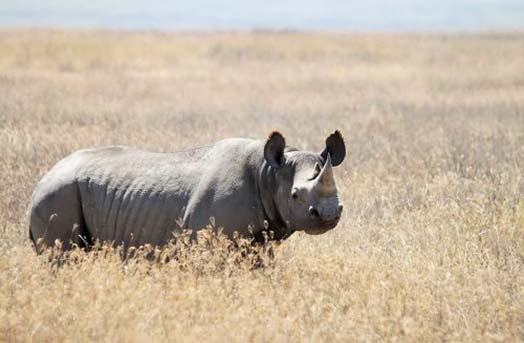
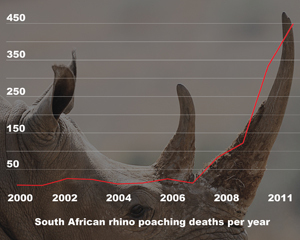
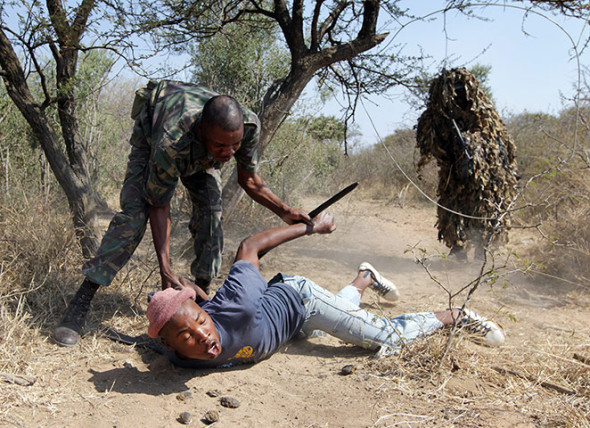


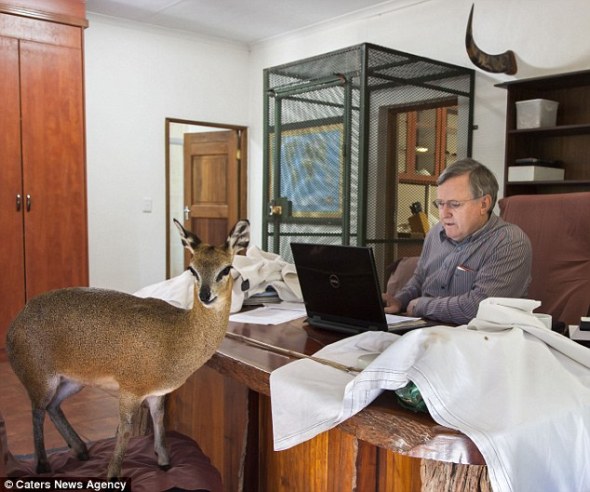



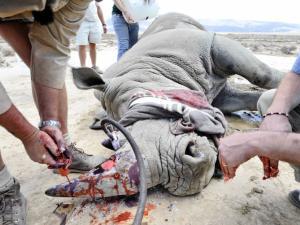


Before I say anything, I ask you to keep an open mind about this and not attack me based on my opinion…
The statements you made regarding the South African government and all their empty promises, is 100% true. I speak for the majority of South Africa when I confirm this.
They are all talk and no action, and this in itself is incredibly frustrating. This is one of the main reasons why South Africa is retrogressing in ALL sectors.
I understand the points that you have raised in this article, but have you stopped to ask yourself WHY people poach rhino’s for their horns?
Yes, traditional medicine and all that, but also because of its worth. People are greedy scumbags and money is the root of all evil.
South Africa is a very rich source of rhino horns. The demand is sky high, but the supply thereof is non-existent. So it would make sense that the price for it keeps rising… Once the trade of rhino horns is legalised, it can ONLY promote the growth of our already deteriorating South African economy…
Think about it:
- Job creation due to increased opportunities of rhino production and breeding.
- Improved education since the experts in the field will be required to transfer their skills to the community.
- A rise in the rhino population of South Africa and ultimately, the world.
- A rise in South African exports - which will also aid the economy since different countries will be dependent on South Africa for this hot commodity.
I can literally go on about the benefits that this will have for the South African economy, but what concerns me the most, is the survival of the species.
The Big 5 is the pride and joy of South Africa! South Africa will be held responsible and frowned upon by the WORLD if we allow one of our icons to die out. Do you really want your children to believe that this ancient, incredible animal was a dinosaur…?
Didn’t think so.
Unfortunately, the exponential decline in the number of these animals that are still in existence has rendered this a crucial situation. We are at a crossroad. There is no time to worry about the aesthetics of the rhino! Industrialization is rapidly occurring throughout the country, making the need for farms, ranches, parks and nature reserves imperative. Whether you like it or not, people HAVE TO interfere to save this species. Even though it is due to interference that the species is nearly extinct.
What you need to understand is that there are different ways of interfering and that your intentions will reflect. If we interfere with the ntention of saving the rhino - then we will save the rhino. Right now, we need to concern ourselves with survival. We need to help them survive by monitoring them and (unfortunately) de-horning them. Because (and let’s be honest) if it weren’t for their horns, they would not be endangered now, would they…?
Think about your actions now and look at how it will affect their future…
If we de-horn them now and keep them close so we can monitor them, then we can control the reproduction in such a way as to increase their numbers. IF the trade of rhino horns is legalised, and there is an influx of demand, then we will be able to generate that economic growth and financial backing that is required to fund the further harvesting of rhino horns and expand the land that belongs to the rhino’s. In doing so, we can steadily rehabilitate the rhino. This way, rhino’s will not suffer at the greedy hands of people who care about nothing but getting what they want. Rhino’s will not bleed to death in excruciating pain.
We have to use what we have left to make it work. SO YES, as you said, let’s stand together and make this work! By all means, this is a very desperate time! And desperate measures are to be taken.
The more control we as people have now, the more freedom the rhino will have in forthcoming generations. I sincerely hope that you can understand that.
Furthermore, I do not think that attacking Mr Varty and Mr Hume over their intentions of saving endangered species and putting emphasis on their age is a very honourable or professional thing to do…
I support you fully with your morals and values. And I too become very aggressive when an animal is threatened by the human race. I would really, thoroughly enjoy to do unto people what they do unto animals, but as a 22 year old South African citizen (by birth), I am TELLING you that you need to be here and experience what we are going through, before you can comment, in any way, on the decisions of the people who are actually busting their asses to SAVE animals.
With all due respect, I still thank you from the bottom of my heart for your intentions and the fact that you stand up for those who cannot speak for themselves.
Thank you so very much.
But please, do not degrade people in such a manner when you do not have a clue what these honourable men are doing this for.
June 15, 2015 at 12:28 pm